纯电动6120BEV旅游客车底盘总布置(含CAD图,CATIA三维图)(任务书,开题报告,文献摘要,外文翻译,论文说明书12000字,CAD图6张,CATIA三维图)
摘 要
当今世界发展的一个重要方向是绿色化和可持续发展,汽车工业也不例外。中国旅游业的发展对旅游交通工具的需求很大,以往的旅游大巴通常是油车,顺应清洁化的发展,旅游客车也应该使用清洁能源,降低对环境的损害。本设计主要研究了一款12米的纯电动旅游客车的底盘总布置,结合客车定位,确定整车参数,对动力系统以及底盘各总成部件进行选型,并对整车性能进行分析。利用三维建模软件,搭建各总成的模型,并合理地布置起来,同时车身和悬架系统尺寸匹配。通过底盘总布置的设计,积累了设计汽车的经验,开拓了设计思想,夯实了专业知识。
关键词:纯电动 客车底盘 总布置
Abstract
An important direction for the development of the world today is green and sustainable development, and the automotive industry is no exception. The development of China’s tourism industry has a great demand for tourism vehicles. In the past, tourism buses were usually fuel trucks. In response to the development of cleanliness, tourist buses should also use clean energy to reduce damage to the environment. This design mainly studies the chassis general arrangement of a 12-meter pure electric tourist bus, combines the positioning of the bus, determines the parameters of the vehicle, selects the components of the power system and the chassis components, and analyzes the performance of the entire vehicle. Using three-dimensional modeling software, the models of each assembly are built and reasonably arranged, while the body and suspension systems are matched in size. Through the design of the general arrangement of the chassis, we have accumulated experience in designing cars, opened up design ideas, and consolidated professional knowledge.
Keyword: Pure electric Bus chassis General arrangement
本研究对象是12米纯电动旅游客车,定位偏向于旅游景点内部运送乘客的车辆,总质量为14200kg,因此本客车选择两轴设计。
表2.1 汽车轴数选择
轴数 适用情况
两轴 汽车总质量不大于19t
三轴 汽车质量在19t到26t之间
四轴 汽车质量大于26t
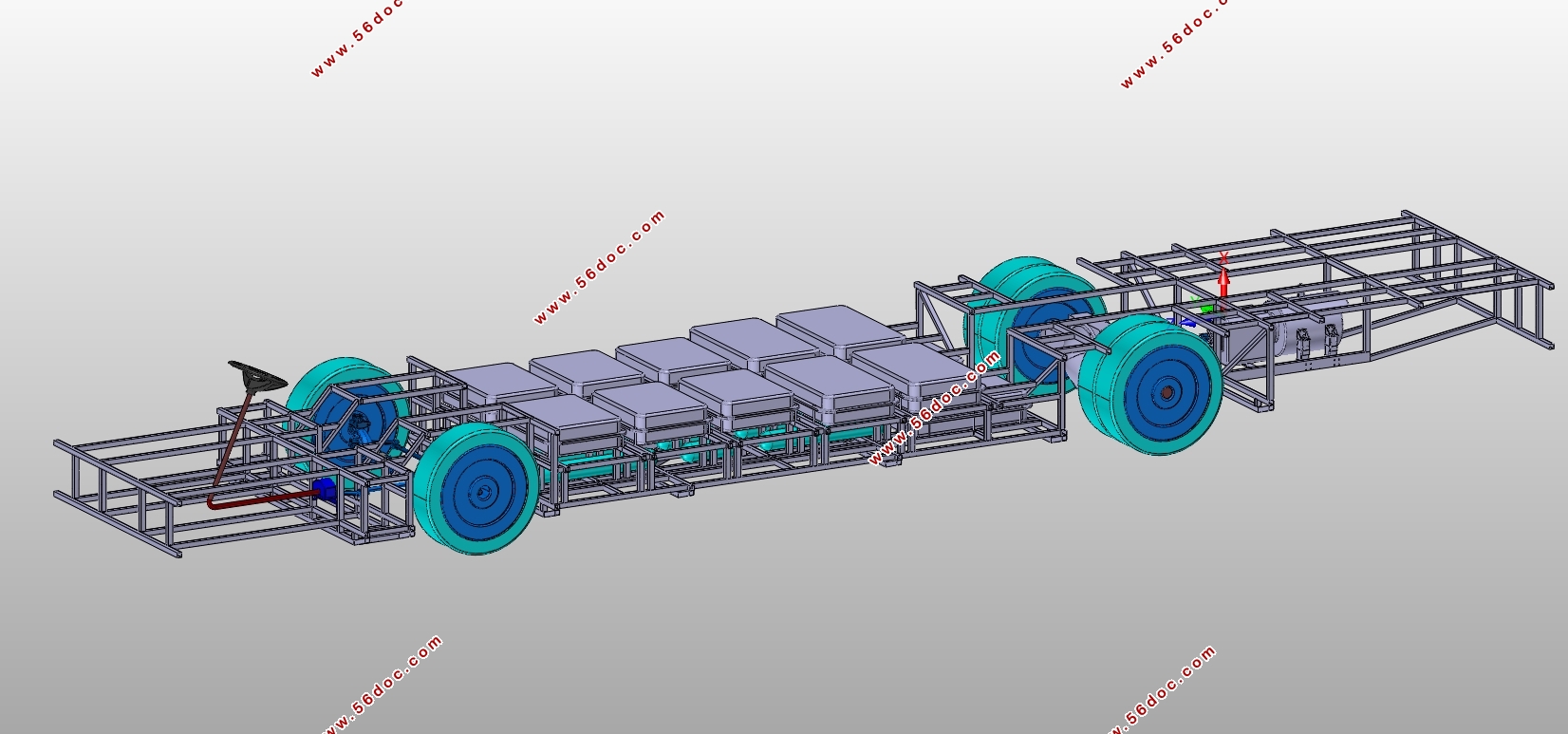
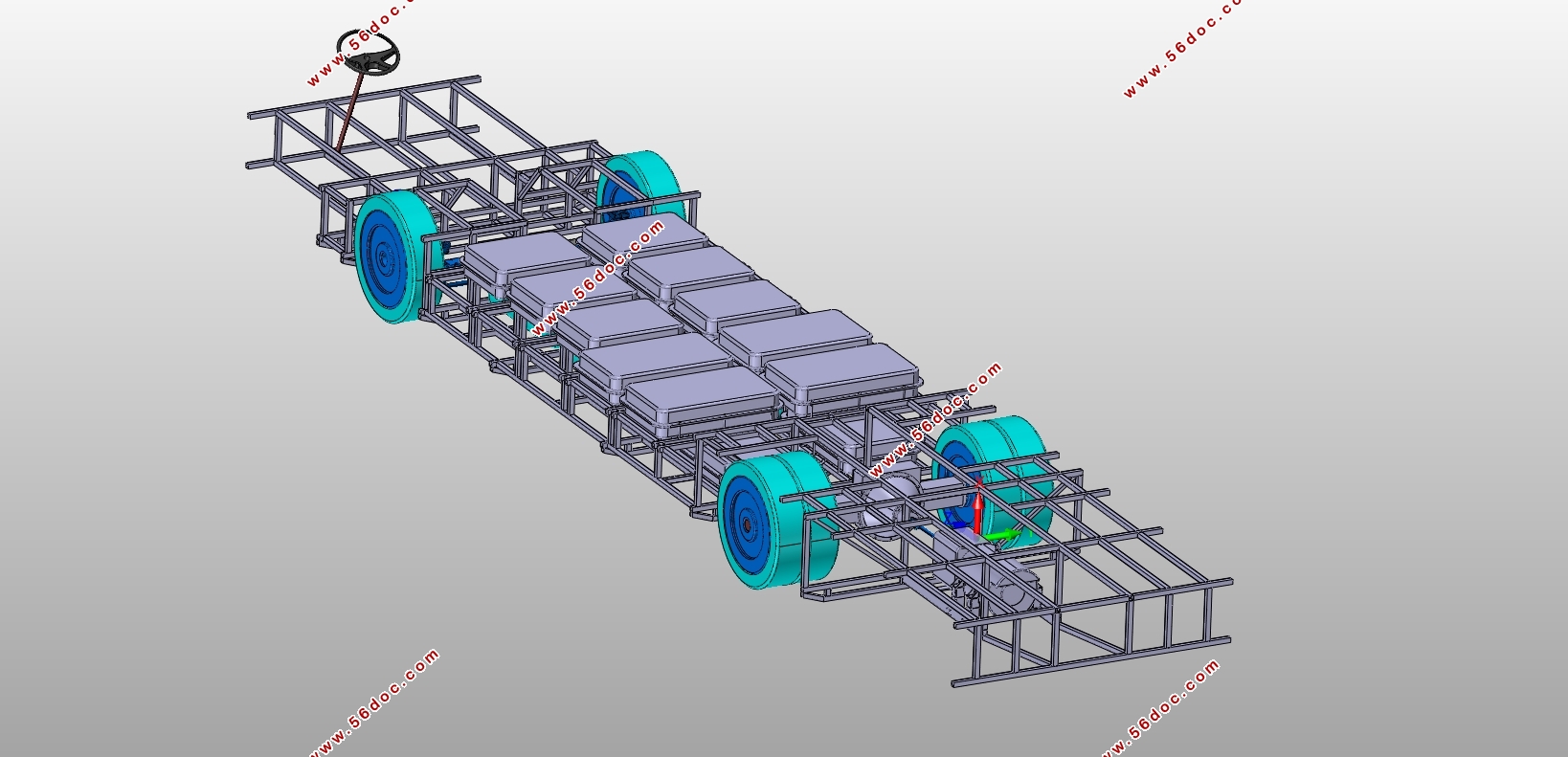
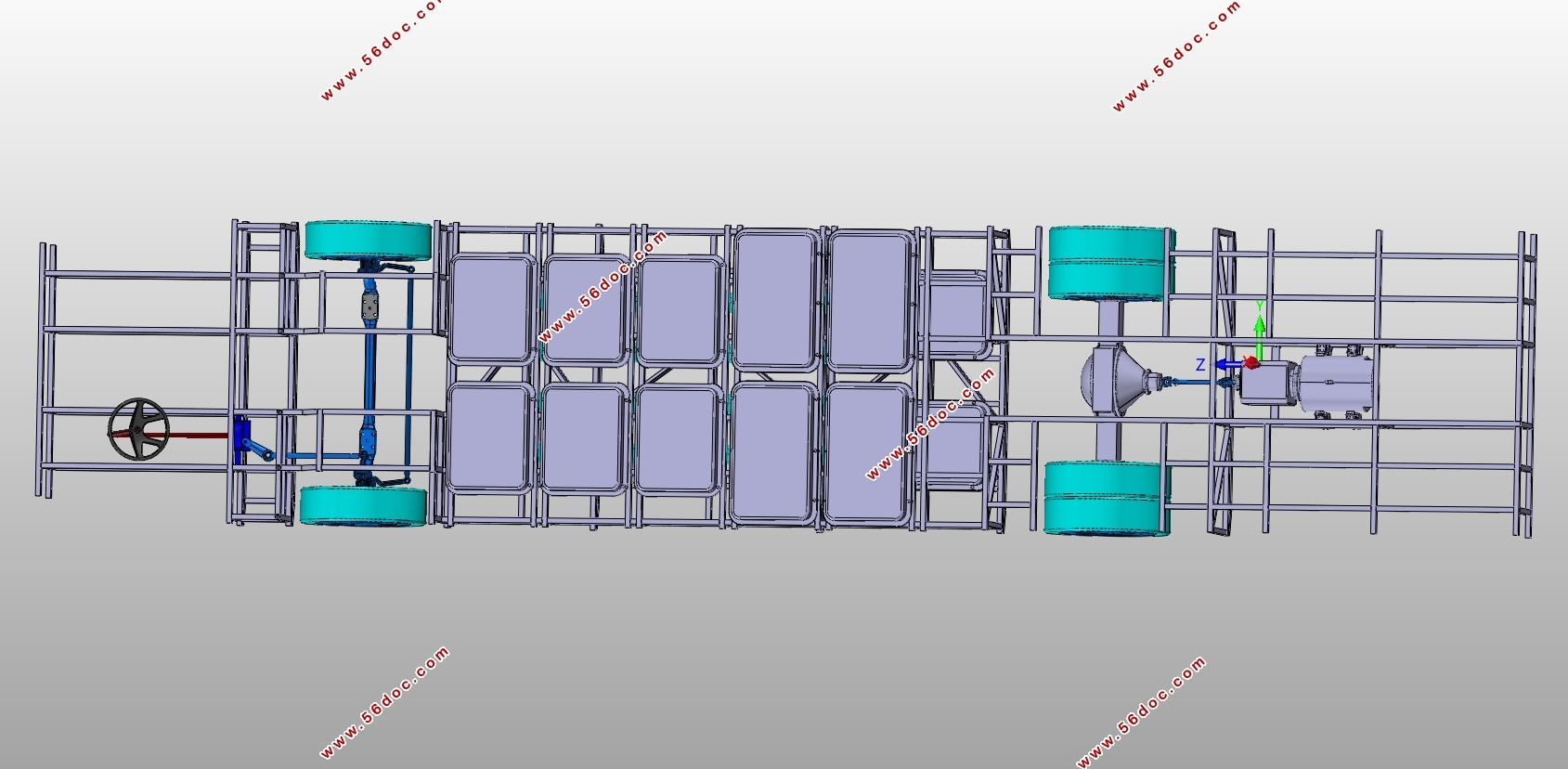
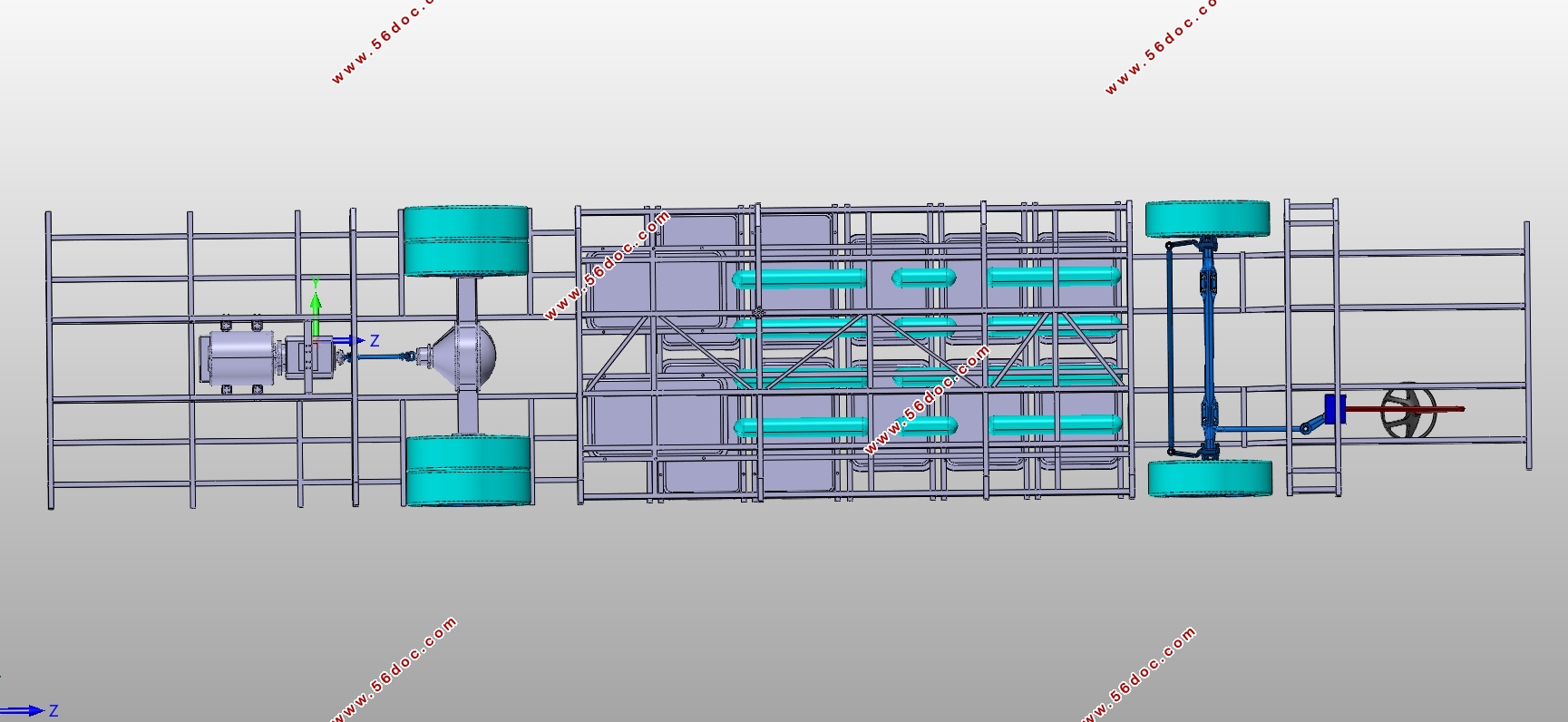
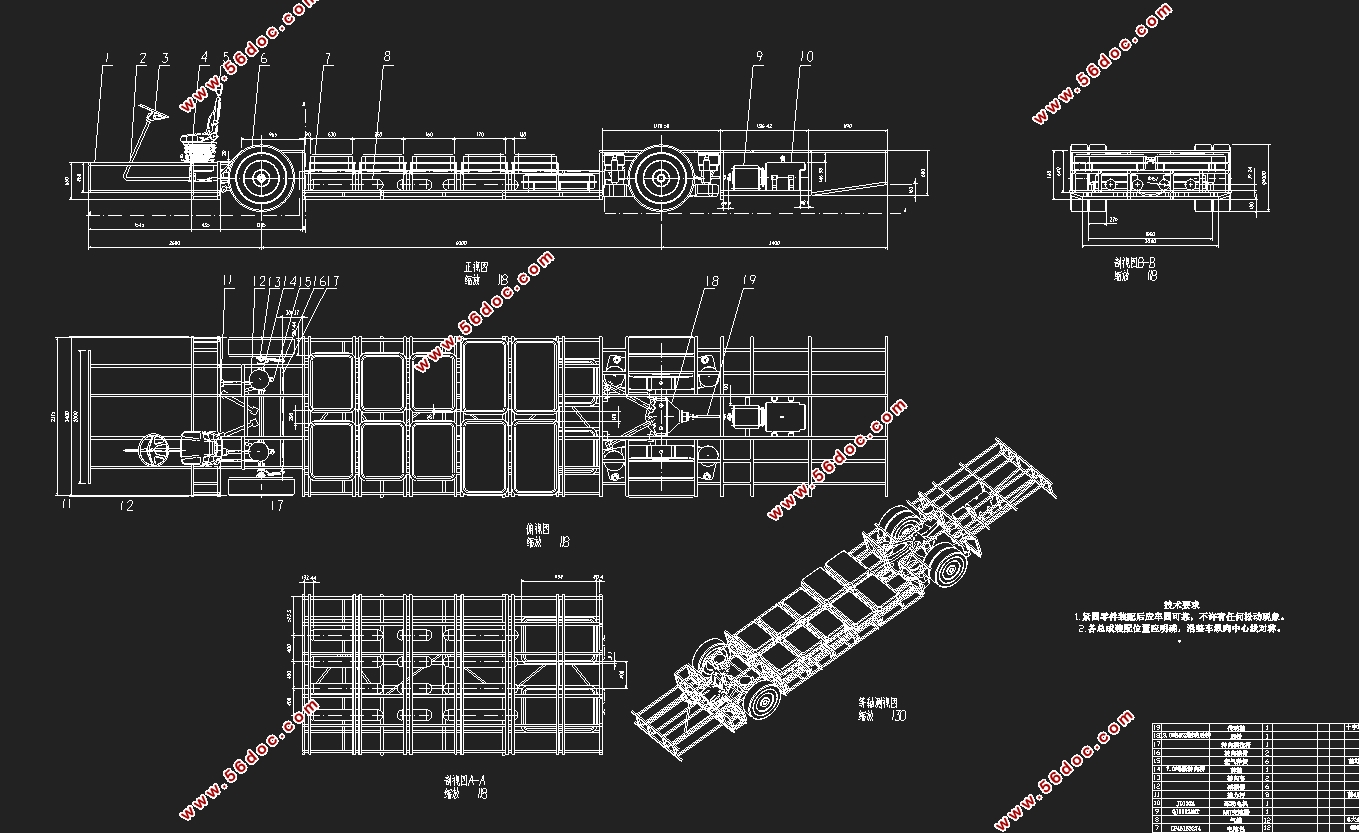
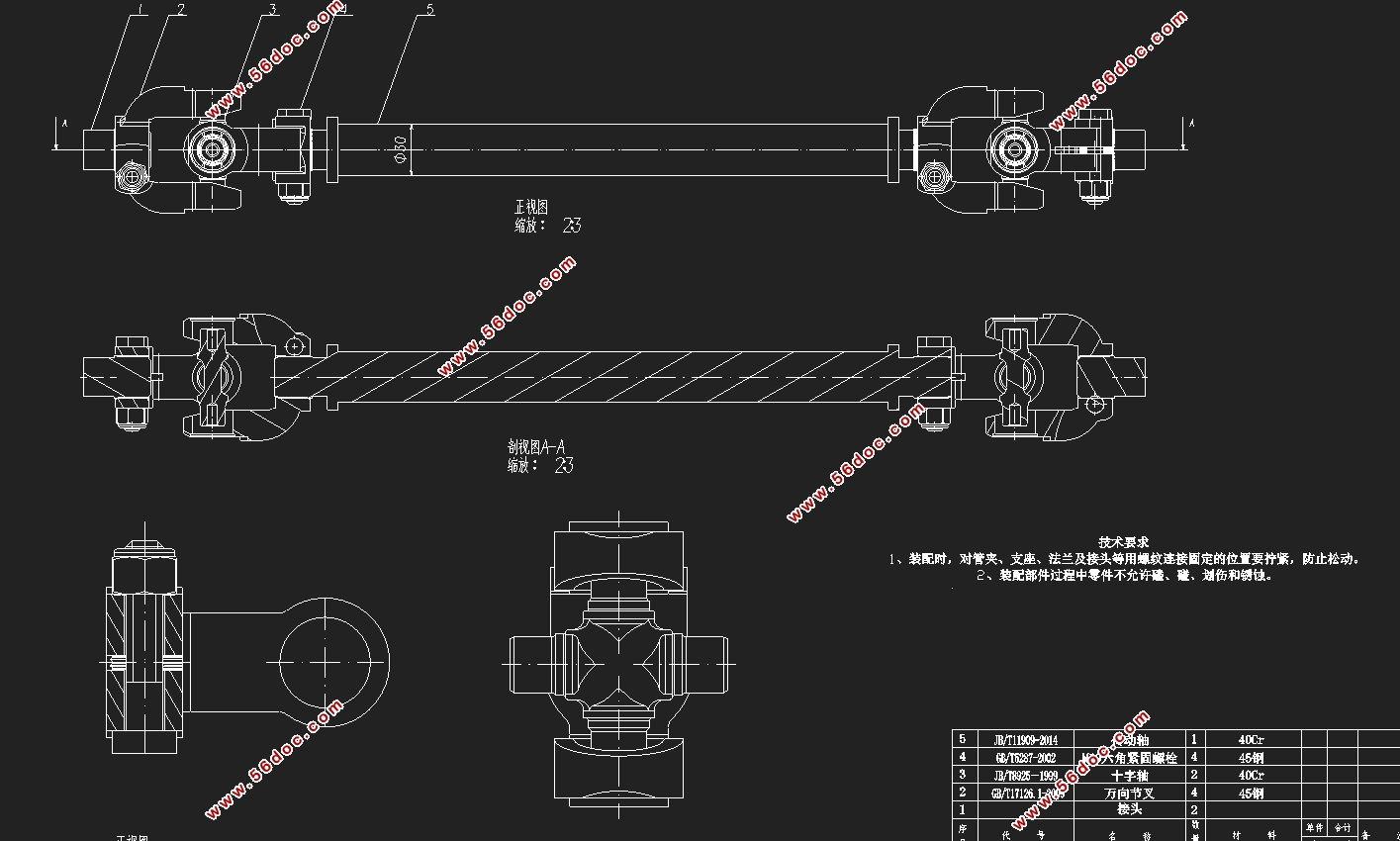

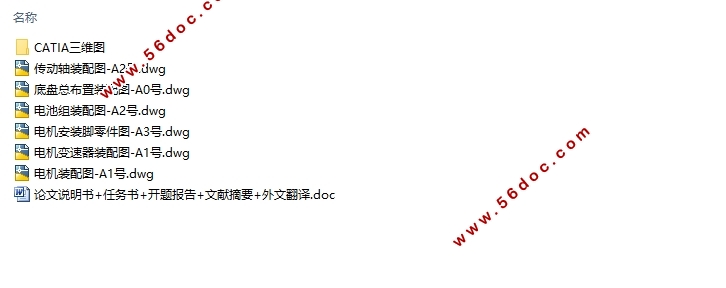
目录
第1章 绪论 1
1.1 研究背景与意义 1
1.2 国内外研究现状 1
1.2.1 国外研究现状 1
1.2.2 国内研究现状 2
第2章 汽车型式的选择 3
2.1 轴数 3
2.2 驱动形式 3
2.3 汽车布置型式的选择 3
第3章 汽车主要参数的选择 4
3.1 主要尺寸参数的选择 4
3.1.1 外廓尺寸的确定 4
3.1.2 轴距L的选择 4
3.1.3 前后轮距B1、B2的选择 4
3.1.4 前悬LF 、后悬LR的选择 5
3.2 主要质量参数的确定 5
3.2.1 汽车的整备质量和装载量 5
3.2.2 轴荷分配 5
3.3 主要性能参数的确定 6
3.3.1 动力性参数的选择 6
3.3.2 最小转弯半径 6
3.3.3 汽车通过性几何参数 7
3.3.5 其它相关计算参数选择与确定 7
第4章 底盘各部件的确定及性能分析 9
4.1 驱动电机的选择 9
4.1.1 驱动电机基本参数计算 9
4.1.2 驱动电机选型 10
4.2 电池组设计 10
4.2.1 电池组容量设计 11
4.2.2 电池组分组 12
4.3 传动系统的确定 12
4.3.1 变速器及主减速器的选择 12
4.2.2 车桥的选择 13
4.3行驶系统的确定 15
4.3.1车架的形式 15
4.3.2悬架的选择 15
4.4转向系统的确定 15
4.5制动系统的确定 15
4.6汽车性分析 16
4.6.1最高车速的计算 16
4.6.2最大爬坡度及动力特性的计算 18
第5章 底盘总布置 22
5.1整车布置基准线 22
5.2行驶系统的布置 22
5.2.1 车架的布置 22
5.2.2 悬架的布置 22
5.3动力系统的布置 23
5.3.1 驱动电机的布置 23
5.3.2 电池包的布置 23
5.4传动系统的布置 23
5.4.1 变速器的布置 23
5.4.2 车桥的布置 23
5.5转向系统的布置 24
5.6制动系统的布置 24
5.7气罐的布置 24
第6章 运动校核 25
6.1转向轮跳动图 25
6.2 传动轴跳动图 26
6.3转向拉杆与悬架导向机构的运动协调校核 27
第7章 总结与展望 28
7.1总结 28
7.2展望 28
参考文献 29
致 谢 31
|

















